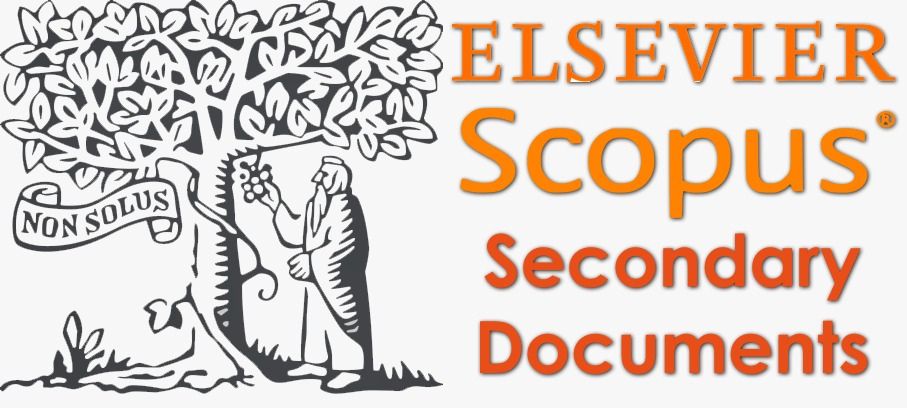AN INFORMATION SYSTEM DESIGN PRODUCT THEORY FOR STUDENT ACADEMIC SELF-SERVICE UNIVERSITY MANAGEMENT SYSTEM
DOI:
https://doi.org/10.15282/ijsecs.7.1.2021.5.0081Keywords:
Software Engineering, Requirement Engineering, Information System Design Theory, University Management SystemAbstract
The role of Information System Design Theory in software development is enormous. With the help of design theory, developers could estimate how the system will be and the reasons why the system reacts that way. The focus of the article is to revised and re-establish the design theory of a self-service university management system. The objectives of this publication are to identify the most relevant publication that will act as a guideline to generate the design theory artifacts and to establish the artifacts which will consist of three components named kernel theory, meta-requirements, and meta-design for the stated system. The system scope will be focused on enabling self-service functions. Validation will be done through FEDS framework with the inclusion of a traceability matrix between the meta-requirement against the real-world user requirement. The significance of this article is to provide an initial set of design theory artifacts to be utilized by software developers in the development or evaluation of a University Management System.
References
I. Graham, Requirements Engineering and Rapid Development. Addison Wesley, 1998.
S. Lauesen, Software Requirements: Style and Techniques, no. January 2002. Addison-Wesley, 2002.
M. Luisa, F. Mariangela, and N. I. Pierluigi, “Market research for requirements analysis using linguistic tools,” Requir. Eng.,
vol. 9, no. 1, pp. 40–56, May 2004.
A. S. Lokman and M. A. Ameedeen, “Modern Chatbot Systems: A Technical Review,” Springer, Cham, 2019, pp. 1012–
Sutarman, M. B. A. Majid, J. B. M. Zain, and A. Hermawan, “Recognition of Malaysian Sign Language using skeleton data
with Neural Network,” in 2015 International Conference on Science in Information Technology (ICSITech), 2015, pp. 231–
M. I. U. Ong and M. A. Ameedeen, “Meta-Requirement Mapping Model,” IOP Conf. Ser. Mater. Sci. Eng., vol. 769, 2020.
M. I. U. Ong, M. A. Ameedeen, and I. E. Kamarudin, “Meta-requirement method towards analyzing completeness of
requirements specification,” in Advances in Intelligent Systems and Computing, 2019, vol. 881, pp. 444–454.
M. I. U. Ong and M. A. Ameedeen, “User Requirement Validation: Challenge Exploration in Pre-project Execution,” IOP
Conf. Ser. Mater. Sci. Eng., vol. 769, 2020.
M. I. U. Ong, M. A. Ameedeen, Z. R. Azmi, and I. E. Kamarudin, “Systematic Literature Review: 5 Years Trend in the Field
of Software Engineering,” Adv. Sci. Lett., vol. 24, no. 10, pp. 7278–7283, Jul. 2018.
M. I. U. Ong and M. A. Ameedeen, “Approaches in Creating Meta-requirement: A Systematic Literature Review,” IOP Conf.
Ser. Mater. Sci. Eng., vol. 769, 2020.
J. G. Walls, G. R. Widmeyer, and O. A. El Sawy, “Building an Information System Design Theory for Vigilant EIS,” Inf.
Syst. Res., vol. 3, no. 1, pp. 36–59, 1992.
P. Meier, J. H. Beinke, C. Fitte, J. Schulte to Brinke, and F. Teuteberg, “Generating design knowledge for blockchain-based
access control to personal health records,” Inf. Syst. E-bus. Manag., pp. 1–29, Aug. 2020.
J. Schjerlund, M. R. P. Hansen, and J. G. Jensen, “Design principles for room-scale virtual reality: A design experiment in
three dimensions,” in Lecture Notes in Computer Science (including subseries Lecture Notes in Artificial Intelligence and
Lecture Notes in Bioinformatics), vol. 10844 LNCS, Springer, Cham, 2018, pp. 3–17.
H. Guo, R. Brown, and R. Rasmussen, “A theoretical basis for using virtual worlds as a personalised process visualisation
approach,” in Lecture Notes in Business Information Processing, 2013, vol. 148 LNBIP, pp. 229–240.
Y. Lu and T. Käkölä, “An Information Systems Design Product Theory for Integrated Requirements, Test and Defect
Management Systems,” in Proceedings of the Annual Hawaii International Conference on System Sciences, 2012, pp. 5516–
Y. Lu and T. Käkölä, “An Information System Design Product Theory for Integrated Order, Transportation and Warehouse
Management Systems,” Proc. Annu. Hawaii Int. Conf. Syst. Sci., pp. 3717–3726, 2013.
P. Forselius and T. Käkölä, “An information systems design product theory for software project estimation and measurement
systems,” in Proceedings of the 42nd Annual Hawaii International Conference on System Sciences, HICSS, 2009.
T. Käkölä, M. Koivulahti-Ojala, and J. Liimatainen, “An Information Systems Design Theory for Integrated Requirements
and Release Management Systems,” 2009 42nd Hawaii Int. Conf. Syst. Sci., pp. 1–10, 2009.
UMP, PERATURAN AKADEMIK PROGRAM DIPLOMA DAN SARJANA MUDA SEPENUH MASA UMP. 2019.
J. Venable, J. Pries-Heje, and R. Baskerville, “FEDS: A Framework for Evaluation in Design Science Research,” Eur. J. Inf.
Syst., vol. 25, no. 1, pp. 77–89, 2016.
G. Spanoudakis and A. Zisman, “SOFTWARE TRACEABILITY: A ROADMAP,” World Scientific Publishing Co, 2005
Downloads
Published
Issue
Section
License
Copyright (c) 2021 Muhamad idaham Umar Ong, Mohamed Ariff Ameedeen

This work is licensed under a Creative Commons Attribution-NonCommercial 4.0 International License.







